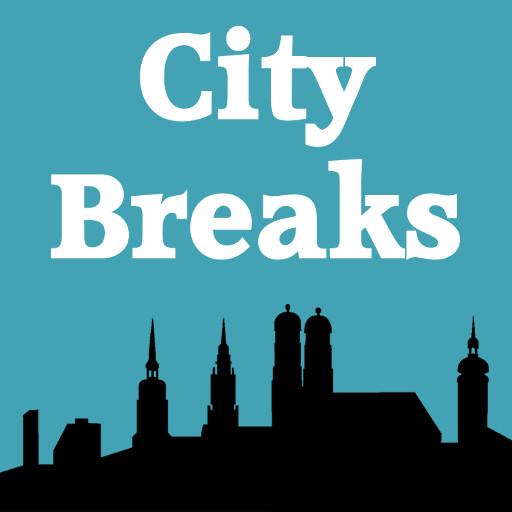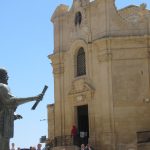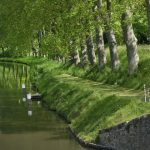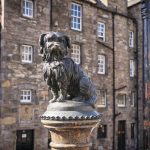Where to find the Knights of Malta today? In fact they’re everywhere, not least in all the souvenir shops where you can buy little models wearing armour and tabards decorated with a Maltese Cross. You’ll also find references to them on information plaques all over the city. What you might not notice straightaway is that the city of Valletta – which they built from scratch – is full of the beautiful buildings they left behind: the auberges, the Grand Master’s Palace, St John’s Cathedral and others. This episode brings a little background history, takes you on tour of their stamping grounds and ends with a section on the most famous of them all, Jean de Valette.
Who were the Knights of Malta?


During the Crusades, noble European families often sent one of their younger sons to Jerusalem to join the Order of St John, a religious group who protected pilgrims and defended the Christian faith. But in 1187 they were driven out of the city by the Muslims and so began a period of wandering all over the Mediterranean in search of a new homeland. It wasn’t until 1530 that the Holy Roman Emperor, Charles V of Spain, granted them Malta. The island’s two fine harbours were a great attraction and they settled down and began building fortifications such as the Fort St Elmo which would prove so vital when would-be invaders tried to seize the island just 35 years later.
the great siege


In 1565, Suleiman the Magnificent, Sultan of the Ottoman Empire, sent 200 ships to invade Malta, saying ‘This cursed island is like a barrier interposed between us and our possessions’. Some 40,000 Ottomans outnumbered the 8,000 Knights trying to defend the island, but the Grand Master, Jean de Valette, was in no doubt about the importance of succeeding: ‘It is the great battle of the cross and the quran which is now to be fought. A formidable army of infidels is on the point of invading our island.’ Fort St Elmo was lost after a 4-week struggle, but eventually the Knights, aided by local Maltese and then by reinforcements from Spain and Italy, prevailed and drove the invaders away.
The Knights’ victory has been talked about ever since. The historian Nuria Rehn, for example, wrote: ‘In the annals of military history, the Great Siege of Malta stands as a defining moment, showcasing the resilience and bravery of the Knights of St John and the Maltese people against the mighty Ottoman Empire’.
after the siege


Realising they could defend the island encouraged the Knights to think about staying long term and a building spree began, starting with their new capital, Valletta, Europe’s first planned city. That explains the grid system, built around the 2 main streets, Republic Street and Merchant Street. One of their first buildings was the Church of Our Lady of Victories, erected as a thanksgiving for their success in battle and described in Episode 02. Many other grand projects followed quickly after that, including 8 ‘auberges’, homes for each of the 8 Orders, and then the Grand Master’s Palace, the hospital, or ‘Infermeria’ and the stunning St John’s Cathedral.
the auberges and the infermeria


The Knights belonged to 8 different orders, known as ‘langues’ (literally ‘languages) and each built their own ‘auberge’ or residence. Some were destroyed in World War II, but others remain some of Valetta’s finest buildings. They include the Auberge de Castille, now a government building, a stunning edifice on Valetta’s highest point whose stepped entrance, pillars, decorative canons and fluttering flags you’ll surely want to photograph. It is possible to get inside two other auberges: the Italian Auberge on Merchant Street is now the National Art Museum and you can peek into its lovely courtyard even if you are not visiting the gallery. And the National Museum of Archaeology is in the Auberge de Provence in Republic Street.
The order was also known as the Knights Hospitalier and in 1574 they began building the Sacra Infermeria, or Holy Infirmary, famed throughout Europe for the medical care provided there, irrespective of the patient’s religion and for the School of Anatomy and Surgery added in 1676. You can visit it today through The Malta Experience, where a film on Malta’s history is followed by a guided tour of the infirmary. It’s stupendous, the longest unsupported hall in Europe, with a soaring vaulted ceiling and room for up to 900 beds. The Knights’ reputation is described in the guidebook as ‘unique in Europe, with patients being served their food on silver plates by the Knights themselves’.
the grand master’s palace


Begun in 1567, just 2 years after the Great Siege, the Grand Master’s Palace, which dominates St George’s Square, will impress you even if you don’t go inside. Admire the huge stone façade with its carvings and balconies – said to be the first added to buildings anywhere in Malta and much copied since. Peek past the guards in their ceremonial uniforms and through the arched entrance for a glimpse of the courtyard beyond. Seek out the two plaques on the front wall of the palace, both showing messages of thanks to the islanders for their resilience in World War II, one from King George VI, who awarded the island the George Cross, and one from President Roosevelt.
If you do go inside, you’ll learn lots more about the Knights. In the wide corridor running round all 4 sides of the building you can see the coats of arms of many former Grand Masters on the marble floor and battle scenes from their history cover the walls. There are more frescos illustrating their history in the Throne Room, along with portraits of Grand Masters and plenty of the red-and-gold finery with which they liked to surround themselves. You can visit the Grand Council Chamber where business and politics were conducted and, in the armoury, you can see full-size models of knights on horseback and admire their extensive weapon collection, built up over centuries.
st john’s cathedral


The Knights’ cathedral was dedicated to their patron saint, St John the Baptist in 1577. It was commissioned by the Grand Master and over the years many other wealthy knights paid for the paintings and decorations you see inside. The outside is relatively plain, but inside it’s like a sumptuous jewellery box, with golden walls and pillars, 18 ceiling paintings depicting the life of John the Baptist and some 350 tombstones covering the floor, their red, black and cream marble shapes covered in Latin inscriptions and emblems. Look out for the 8 side chapels, one for each order of knights, for the Grand Master’s episcopal throne near the altar and for Jean de Valette’s sarcophagus.
Perhaps the greatest treasures are the two original Caravaggio paintings on display in the oratory. The Beheading of John the Baptist is his largest work and it hangs exactly where he painted it over 400 years ago. Nearby is the smaller Saint Jerome Writing. There’ll be more on both pictures in Episode 05.
jean de valette


This most famous of all the Knights of Malta, after whom Valetta was named, was the Grand Master at the time of the Great Siege. From his birth in France in 1494 to his election as Grand Master in his early 60s, he led a drama-filled life of derring-do: imprisoned for attacking a foe, captured in battle and forced to work as a galley slave, becoming Governor of Tripoli, and suchlike. But he was well respected and described by a contemporary as ‘a very handsome man, speaking several languages fluently including Italian, Spanish, Greek, Arabic and Turkish’. He died a few years after the siege and was buried in the church he’d commissioned, Our Lady of Victories.
After a few years, when the much grander St John’s Cathedral was finished, his tomb was moved there, where you can still see it today in a side aisle. His epitaph reads:
Here lies Valette
Worthy of honour
He who was once the scourge
Of Africa and Asia
And the shield of Europe
Whence he expelled the barbarians
by his Holy Arms
Is the first to be buried in this beloved city
Whose founder he was.
Listen to the podcast
reading suggestions
The Knights of Malta by Joseph Attard
The Shield and the Sword by Ernie Bradford
links for this post
The Malta Experience and the Holy Infirmary
The Grand Master’s Palace
The Armoury
St John’s Cathedral
The National Art Museum
The National Museum of Archaeology
Previous episode 3 Walks around Valletta
Next episode Coming very soon
Last Updated on November 5, 2025 by Marian Jones





